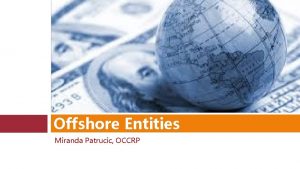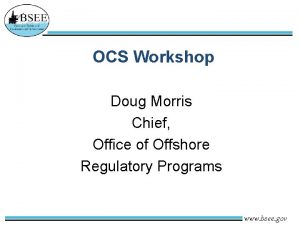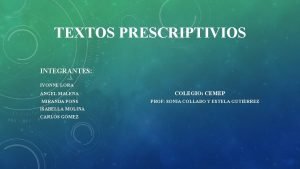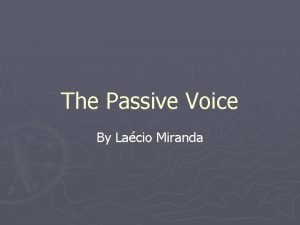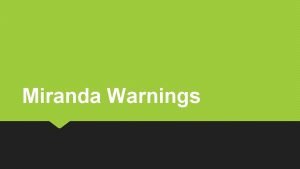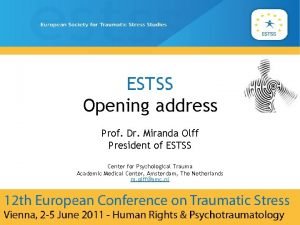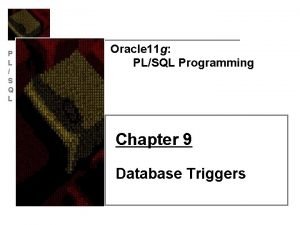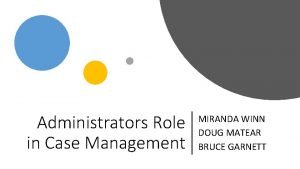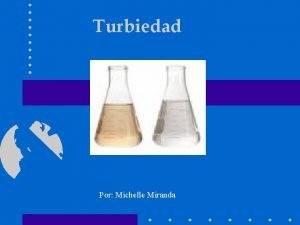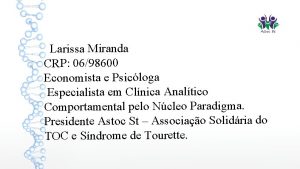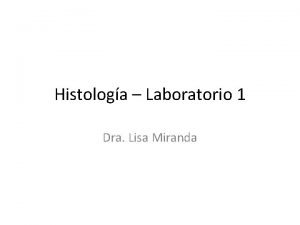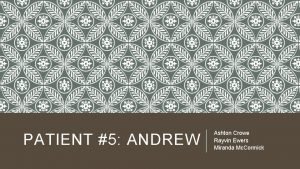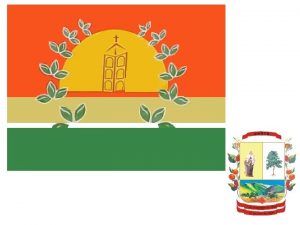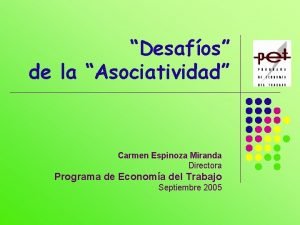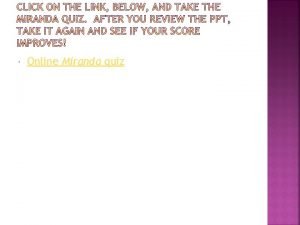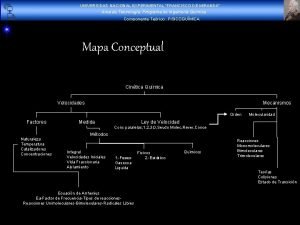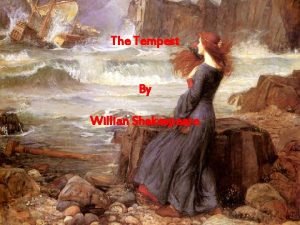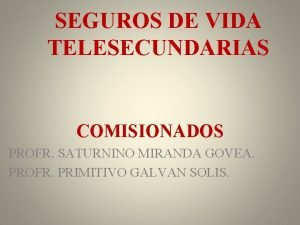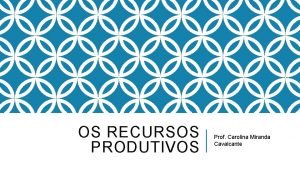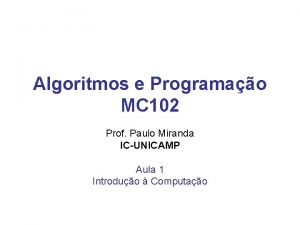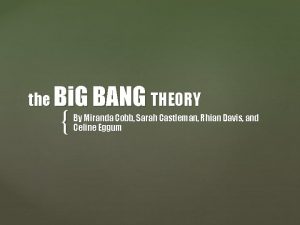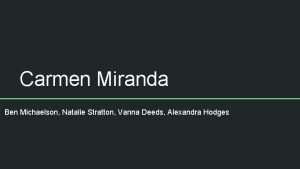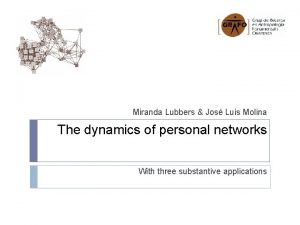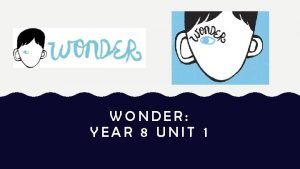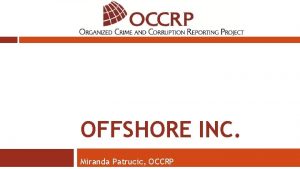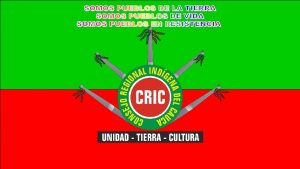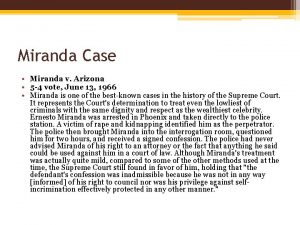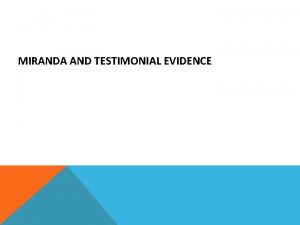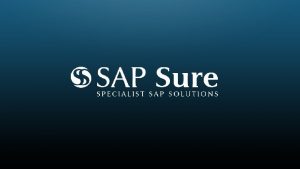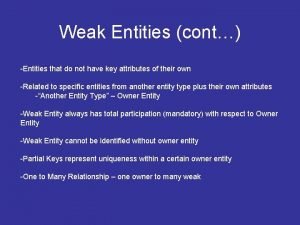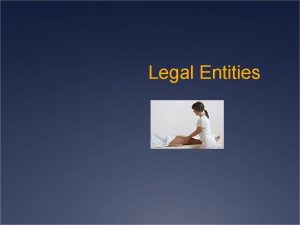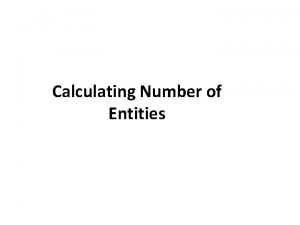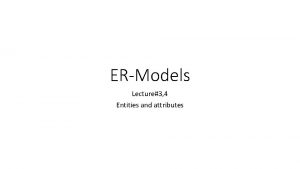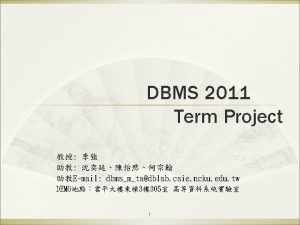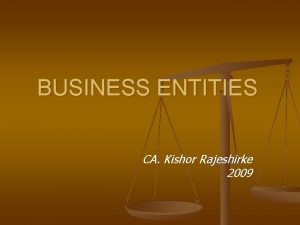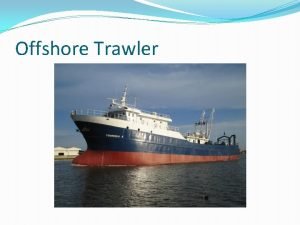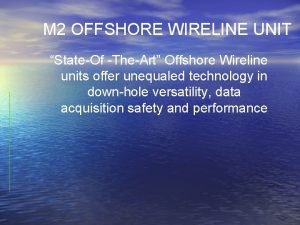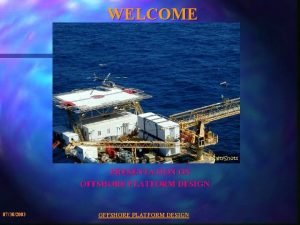Offshore Entities Miranda Patrucic OCCRP Offshore Entities Many































- Slides: 31

Offshore Entities Miranda Patrucic, OCCRP

Offshore Entities Many offshore entities serve a legitimate purpose in the business world, however, as is the case with many things, they are also manipulated by criminals to hide their crimes, secrete their assets and shield their identities. � � Powerful tools, especially to the layering and intergration stages of the money laundering process. Perception of Bank Secrecy.

Why Utilize Offshores? Criminal Organizations recognize the difficulties law enforcement encounters when international borders are crossed. Opens the door to the utilization of a wide variety of financial products and/or services: banking and brokerage services, tax shelters, international investments Range of service providers and types of nonfinancial services offered: mail drops, answering

How They Service Criminals? Maintain Break link Hide the source Conceal the control over between illegal criminal of funds used true ownership activity and to buy property of real property proceeds and assets Fluctuation ofassets balances attract less attention in Provide some Perpetuate or corporate security from support a fraud. detection accounts than in personal ones.

Typical Offshore Entites Shell Companies Shelf Companies Trusts

Shell Companies Have no physical presence, employees or product Operate from a mail drop, mail center, office service business or the Internet Laws vary as to what information the establishing service must provide to the incorporating jurisdiction Set up through intermediaries or attorneys May be owned by other corporations, nominee owners

Shell Companies Are often owned by nominee No capital and Can be registered shareholders, minimal fees are in remote nominee directors, required to geographical bearer shares or establish locations other corporate Once established, entities shell companies can Beneficial hold bank accounts, ownership need not own property and be disclosed or part maintain assets of the public record without reporting it to the licensing jurisdiction

Basic Shell Company Structure Nominee Incorpora tion Service Nominee Director Establishes Company A Opens Bank Account Establish es Mail Drop

Shelf Companies Similar to a Shell company in that they offer no real “brick and mortar” company. Difference between the two is age since incorporation. Shelf companies are: � � � Established to provide a cadre of available entities to be sold at a later date. A defunct corporation that was purchased for its history and later sold to a client. A company that is passed along between clients but is

Trusts A trust is a binding obligation, requiring a person (the trustee) to manage the property or assets over which he/she has control (the trust property) for the benefit of persons or entities specified (the beneficiaries) as described under the terms of the trust (trust deed and letter of wishes). � � � The trust arrangement can be set up for a determinate or indeterminate period of time. The trust owns the assets assigned to it. Trusts separate legal ownership of property from beneficial

Trust Structure Settlor: The person who transfers property or assets to the trustee Trust Beneficiaries: The person(s) on whose behalf the property and/or assets are held Trustee: The person obliged to manage the property and/or assets

Trusts Trusts are granted a greater level of privacy than corporate entities and are not required to be centrally registered. Most services establishing trusts or other trustee services are not regulated. Many utilize attorney escrow or operating accounts as an entry point for funds transferred to the trust. Trusts have many legitimate uses: � � Estate planning Tax planning Asset protection Confidentiality

Trusts Used by Criminals Legitimate use of trusts can easily be adapted to the criminal. Although giving up the legal ownership of the property, the criminal maintains distant control over his assets. The distant control allows him/her to shelter his/her assets from his/her criminal conduct or his/her personal connection to it. Layering trusts with shell companies creates a

Types of Trusts Life Interest Trusts This form of trust is designed to protect the family home. Each individual's share of the jointly owned property is preserved for the benefit of their children, while surviving partners may occupy the property for the remainder of their lifetime. Discretionary Trusts This is the most flexible form of trust. It allows the Settlor to place the assets under trust at the discretion of the trustee(s), who will decide who is to benefit and how. A Settlor may wish to do so to protect himself against forced heirship rules. The Settlor will usually draft a letter outlining his wishes to the trustee. Settlor Directed Trusts A trust established with provisions enabling the settlor to direct the trustees in investment matters and/or asset distributions.

Types of Trusts Charitable Trusts A trust will be recognized as charitable if its purpose is the relief of poverty, the advancement of education, religion, or any other community benefit. Blind Trusts A trust in which the beneficiaries do not have knowledge of the trust's specific assets, and in which a fiduciary third party has complete management discretion. Dummy Settlor Trust A trust where Dummy Settlors may be used to conceal the identity of the Settlor

Money Laundering Miranda Patrucic, OCCRP

Money Laundering The money derived from illegal activity by concealing the identity of the individuals who obtained the money and converting it to assets that appear to have come from legitimate sources. The process of disguising the proceeds of crime in an effort to conceal their illicit origins and legitimize their future use. � Monetary proceeds derived from criminal activity are transformed into funds with an legal source

Money is Laundered Through … Banks Brokerage Firms Money Remitters Cash intensive businesses Financial Services Insurance Companies Realtors Crooked Lawyers and Accountants

Money Laundering Circle • Corruption and Bribery • Fraud • Organized crime • Drug and human trafficking • Environmental crime • Terrorism • The last stage in the laundering process. • Occurs when the laundered proceeds are distributed back to the criminal. • Creates appearance of legitimate wealth. • Initial introduction of criminal proceeds into the stream of commerce • Most vulnerable stage of money laundering process Crime Integra tion Placem ent Layerin g • Involves distancing the money from its criminal source: • Movements of $ into different accounts • Movements of money to different countries • Increasingly difficult to detect


Placement Physically moving and placing the funds into financial institutions or the retail economy � � Depositing into accounts via tellers, ATMs, or night deposits Changing currency to cashiers checks or other negotiable instruments Exchanging small bills for large bills Smuggling or shipping out side the county

Layering Multiple and sometimes complex financial transactions are conducted to further conceal their illegal nature

Integration Illicit funds re-enter the economy disguised as legitimate business earnings (securities, businesses, real estate)

Signals Obvious lifestyle changes may indicate fraud and unreported income: � � � Lavish residence Expensive cars and boats Vacation home Private schools for children Exotic vacations

Indicators Concealing of assets Payments to fictitious persons or companies Two sets of records Destruction of records Large frequent cash Transactions False or altered billings or invoices Large company loans to individuals or officers with no particular repayments Personal expenses paid out of company funds

Records Cash Disbursemen t Journals Personal records Informants Real estate records Court records Bankruptcy and motor vehicles Loan applications Tax return Divorce and child support records Employment and bank records Household trash Cash Receipt Journals

Methods Structuring Bulk Cash Smuggling Cash. Intensive Businesses Shell Companies and Trusts Round. Tripping Bank Capture Casinos Gambling Real-Estate Black Salaries Fictitious Loans Trade-Based Laundering

Exercise: Stash Your Cash http: //www. icij. org/offshore/interactive-stash -your-cash

Unveiling Beneficial Ownership Miranda Patrucic, OCCRP

Piercing the Veil of Secrecy The most desirable and dangerous act for a criminal is to use his/her ill gotten gains. One piece of information can begin the process of piercing the veil of secrecy. There are various investigative techniques that should be used to begin this process. But, there is no one formula except to be as creative as the criminal!

Piercing the Veil of Secrecy Understand what is available in different jurisdictions and how to obtain the information. Use other tools: � � � Interviews Cooperative efforts Sourcing Obtain all property and financial records
 Nominee structure
Nominee structure Miranda patrucic
Miranda patrucic Malena miranda
Malena miranda Miranda the voice
Miranda the voice Deepl ü
Deepl ü Escobedo v illinois
Escobedo v illinois Miranda olff
Miranda olff Oracle trigger precedes example
Oracle trigger precedes example Miranda winn
Miranda winn Michelle miranda principal
Michelle miranda principal Miranda potilastietojärjestelmä
Miranda potilastietojärjestelmä Do que miranda, amiga de via, chamava august?
Do que miranda, amiga de via, chamava august? Síndrome de tourette
Síndrome de tourette Miranda willis
Miranda willis Lebedeff construye
Lebedeff construye Miranda v. arizona
Miranda v. arizona Miranda burgess
Miranda burgess Ashton crowe
Ashton crowe Historia del municipio miranda
Historia del municipio miranda Carmen espinoza miranda
Carmen espinoza miranda Miranda
Miranda Francisco de miranda universidad
Francisco de miranda universidad Miranda la tempesta
Miranda la tempesta Saturnino miranda
Saturnino miranda Carolina miranda cavalcante
Carolina miranda cavalcante Manobra de brandt-andrews
Manobra de brandt-andrews Cpu miranda
Cpu miranda The bi bang
The bi bang Miranda natalie 2010
Miranda natalie 2010 By miranda
By miranda Miranda lubbers
Miranda lubbers Wonder miranda
Wonder miranda
